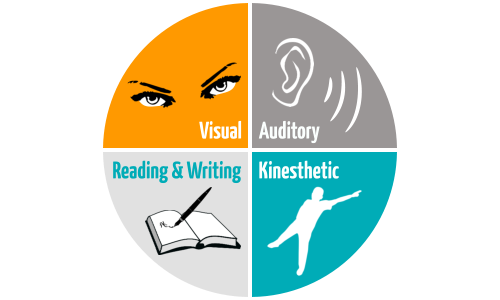
What’s Your Learning Style? Explaining VARK
4 Different Learning Styles (One Size Doesn’t Fit All)
Done are the days of endlessly hitting the books and memorization; no longer are students expected to learn using equal techniques and methods. Different learning styles have been acknowledged, although it is often a debate between teachers, psychologists, and the U.S Department of Education regarding the specific types and their validity.
The education community debates whether different learning modalities exist and if and how teachers should cater to them. Here is an overview of the popular VARK theory: four different identified styles and how students can possess qualities of one or more.

Explaining VARK
VARK stands for Visual, Auditory, Reading/Writing, and Kinesthetic. The basis of this theory is that one type of learning method does not fit all. The creators developed the VARK theory for two purposes:
- To explain the multimodal facets of learning for teachers and students
- To adapt helpful learning and development techniques in the workplace
This theory promotes the idea that students have many qualities of different learning styles. VARK states that two types of multimodal learners are quite common.
Type 1 explains those who are flexible in their methods and able to switch between the four learning styles smoothly. Type 2s desire to have all the information they can gather throughout different techniques. They require a better understanding before sharing their findings. Taking their time to collect information can be seen as procrastination, but it is the way they learn best.

Types of Learning Styles
Learning Style #1: Visual
First, humans are a highly-visual species, and 65% of humans identify as visual learners. This group prefers to view information through graphs, diagrams, flow-charts, patterns, valuable white space, and other visual cues.
Learning Style #2: Auditory or Aural
Second, auditory learners find verbal cues the most helpful such as lectures, podcasts, audiobooks, discussions, and the like. Conclusively, repetition is a standard method for memorization, and problem-solving occurs through discussion rather than internal dialogue. About 30% of humans are auditory learners and can often retain up to 75% of what they have just heard.
Learning Style #3: Reading/Writing
Third, the definition of this group causes debates among educators. Many that prefer this style use tools from the other methods to supplement their education. The reading/writing style appears in many students. Common learning materials include essays, textbooks, briefs, lists, dictionaries, or any written materials.
Learning Style #4: Kinesthetic
Fourth, this mode refers to the “perceptual preference related to the use of experience and practice (simulated or real).” This learning style is preferred by those who value real-world experiences.

Are there more learning styles?
Finally, some experts claim there are more than four styles. Other learning styles discussed include Logical, Social, and Solitary. These styles further divide the left- and right-brained methods of learning to encourage students to understand what works best for them. Researchers argue that creating personalized learning plans can improve the speed and quality of a student’s learning.



